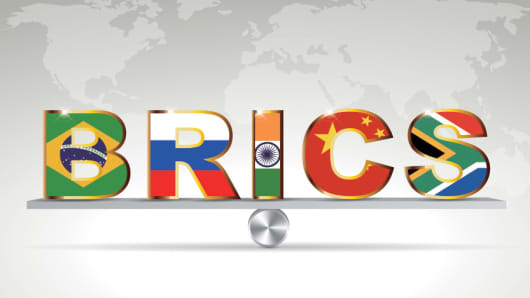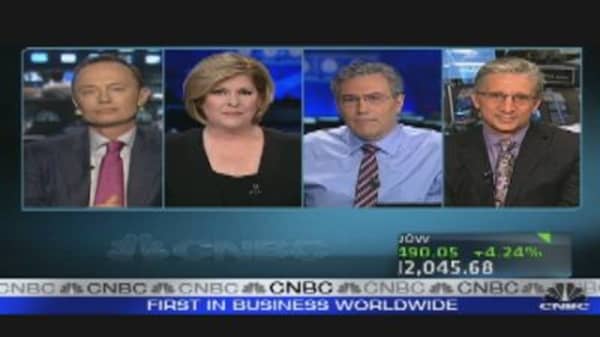The attempt by major central banks to ease strainson Europe's credit markets certainly cheered financial marketson Wednesday, but what does the coordinated action actually do?
In essence, the US central bank,or Federal Reserve,agreed to provide cheaper dollar funding to the European Central Bank—which can then provide cheaper dollar loans to cash-strapped European banks. (For a fuller explanation of how the ECB borrows from the Fed, click here.)
The participation of the central banks of Canada, England, Japan and Switzerland is more of an effort to show that all the central bankers are working together than any expectation that there will be lots of dollar borrowings under their facility.
The goal is to ease the credit crunch in Europe. Lots of European banks make dollar denominated loans, in part because US interest rates are so low. The banks do not usually finance these loans in the way you might think—by lending out the deposits of their retail customers. Instead, the loans are financed by short-term borrowings from other financial institutions.
When European banks make a dollar loan or purchase a dollar denominated asset, they typically borrow the dollars on the what’s called “international wholesale deposit market”—which is a fancy word for borrowing from other banks that have dollars. Alternatively, they can borrow in their native currency and then use foreign exchange swaps to hedge the currency risk.
Now thatEurope is in the throes of a debt crisis, it has become much more difficult if not impossible for many European banks to borrow dollars in the wholesale markets. To make dollar loans, then, they have to turn to the European Central Bank. What’s more, the cost of the foreign exchange swaps has increased, making it more expensive to make dollar loans based on euro assets.
Normally, central banks only make loans in their domestic currencies. But in times of international stress—the credit crisis of 2008, for instance—central banks around the world set up swap lines that allow them to borrow from each other, creating the ability for them to make loans in other currencies.
In short, European banks were finding it too expensive to make dollar loans, which hurt their ability to lend dollars and encouraged them to sell euros. This depressed the value of the euro and restricted credit in Europe. The ECB arranged to borrow dollars more cheaply from the Fed, so it could ease this market.
So is this some giant giveaway to profligate Europeans of US taxpayer money?
Not quite. In the first place, European banks are major lenders to the US corporate market. When they cannot participate in dollar loans to US companies, US credit also contracts. What’s more, these are loans to the ECB, which is unlikely to default. Finally, the Fed isn’t lending out “taxpayer dollars” at all. Rather, it is lending out newly created dollars at very low interest rates.
That doesn’t mean that US taxpayers are not risk here, of course. The new dollars have the potential to spark inflation—which could result in higher interest rates and higher taxes as the government combats inflation. But in the current economic environment, the risk of inflation is very slight.
Questions? Comments? Email us atNetNet@cnbc.com
Follow John on Twitter @ twitter.com/Carney
Follow NetNet on Twitter @ twitter.com/CNBCnetnet
Facebook us @ www.facebook.com/NetNetCNBC





